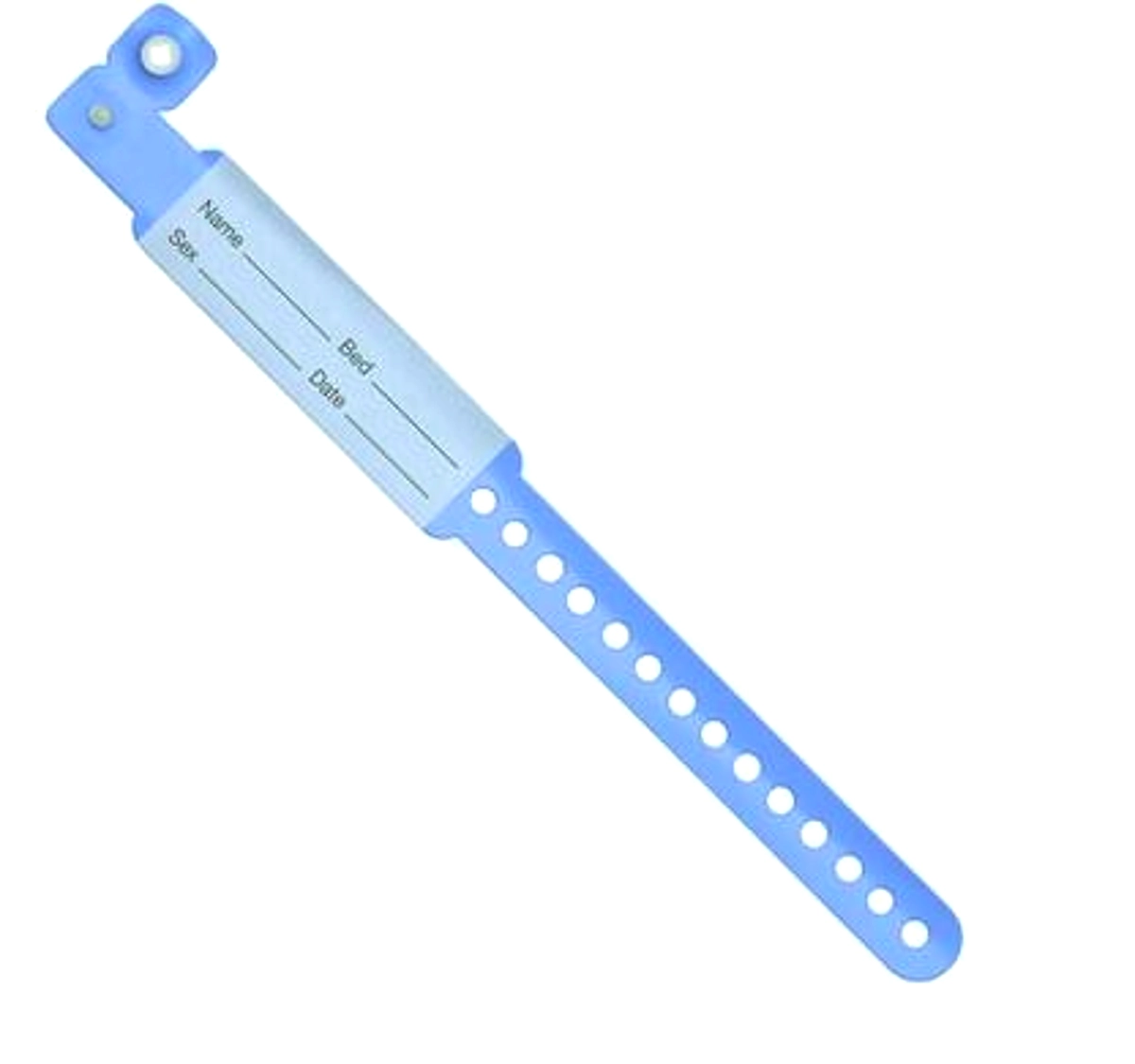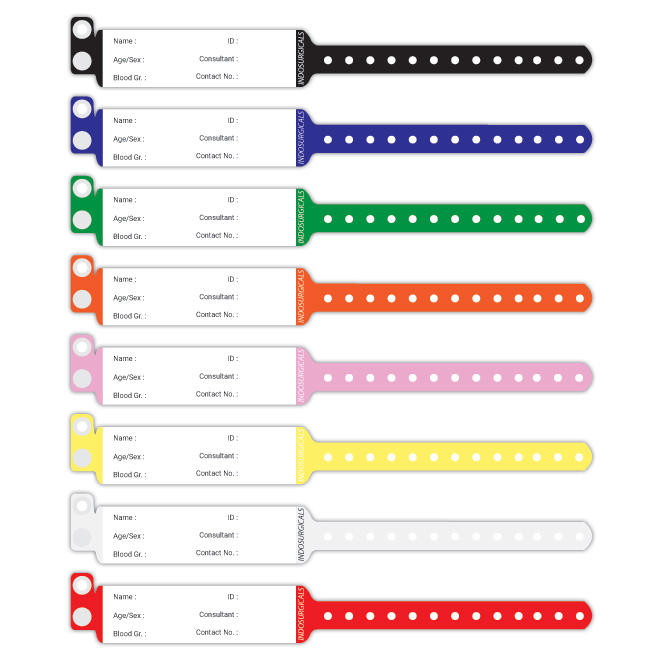A Comprehensive Guide to the Various Types of Patient Identification Band
Exploring the Different Sorts Of Patient Identification Band Used in Clinical Facilities
In the detailed world of healthcare, the critical duty of Patient Identification bands usually goes unnoticed. These bands, varying from easy paper wristbands to sophisticated RFID bands, develop the backbone of Patient security protocols, making sure precision in Patient Identification.
Recognizing the Significance of Patient Identification Bands
While they may appear like plain accessories, Patient Identification bands play an essential role in clinical centers. These bands serve as an important device for confirming Patient identity, protecting against medical errors related to misidentification. Patient Identification bands also help in simplifying management jobs, ensuring exact record-keeping and payment.
Traditional Paper Wristbands: Their Usage and Limitations
Standard paper wristbands have been a staple in Patient Identification across different clinical centers. While their usage prevails, they harbor certain limitations that might influence their performance in Patient management. This area will certainly concentrate on the range of their application and the fundamental drawbacks related to their usage.
Paper Wristbands: Usage Range
In the world of Patient Identification, paper wristbands have long held a critical duty. These bands are usually made use of in outpatient settings, where the Patient's remain is short-term. The wristbands have vital details such as the Patient's name, day of birth, and an one-of-a-kind Identification number. This basic, yet efficient system, permits physician to promptly and accurately identify clients, guaranteeing the proper therapy is administered. Paper wristbands are likewise made use of in emergency situation circumstances, where rapid Identification is extremely important. Their use includes events like blood contribution drives and mass vaccination programs, better emphasizing their versatility. Despite advancements in technology, the humble paper wristband continues to be a economical and reputable remedy for Patient Identification in different health care situations.
Limitations of Paper Wristbands
Despite their widespread usage, paper wristbands are not without their disadvantages. In enhancement, paper wristbands commonly lack the technical capacities of even more modern-day alternatives, such as barcoding or RFID chips, limiting their performance to simply presenting written information. Paper wristbands can trigger discomfort or skin irritability to some clients, specifically when worn for prolonged durations.
Barcoded Wristbands: Developments in Patient Identification
While Patient Identification has actually long been an important element of health care, the development of barcoded wristbands signifies a substantial leap forward. These bands utilize the simpleness of barcoding modern technology, permitting for Patient details to be swiftly scanned and accessed. They enhance the rate and precision of Patient Identification, minimizing the danger of medical errors related to misidentification.
Superhigh Frequency Identification (RFID) Bands: an Action Towards Futuristic Health Care
The evolution of Patient Identification bands has actually brought about the introduction of Superhigh frequency Identification (RFID) Bands (patient identification band). These cutting-edge tools present essential benefits for healthcare centers, offering an extra reliable and technically advanced means of Patient Identification. The implementation of RFID in healthcare is a significant step in the direction of a more advanced approach to Patient monitoring and security
Understanding RFID Bands

RFID Bands: Trick Advantages
Accepting a future where technology and healthcare merge, radio frequency Identification bands use numerous key benefits. Mainly, these bands improve Patient safety and security by providing exact, rapid Identification, thus minimizing medical errors. RFID bands can store a large amount of Patient information, including case history and allergies, making it possible for customized treatment. They also simplify management tasks, as the automated information entry changes hand-operated processes, enhancing effectiveness and minimizing documentation. RFID bands offer real-time monitoring of individuals, important in risky settings such as surgical procedure or extensive care. Last but not least, these bands are resilient and immune to environmental aspects, making certain consistent performance. Generally, RFID bands stand for a considerable advancement in Patient Identification modern technology, profiting both people and doctor.
Applying RFID in Health Care
As we enter a technologically innovative period, the execution of RFID bands in medical care ends up being increasingly essential. These bands provide a seamless method to track and identify individuals, guaranteeing their security and improving effectiveness in treatment procedures. RFID bands use numerous advantages over traditional Identification approaches. They can save a vast quantity of data, consisting of the Patient's clinical background and therapy strategies, which can be easily accessed my review here by health care suppliers. This data like it assists medical professionals make educated decisions concerning the Patient's therapy plan. Furthermore, RFID bands reduce clinical errors by supplying accurate Patient Identification, which is essential in avoiding misdiagnosis or wrong medication management. Thus, the application of RFID bands is a substantial action towards improving Patient security and medical care shipment.

Color-Coded Wristbands: Helping in Quick and Accurate Medical Diagnosis
In the dynamic setting of a medical facility, color-coded wristbands have actually emerged as important devices for swift and specific Identification of an individual's clinical condition. These wristbands, used by patients, carry details colors that match to different clinical problems or conditions. This system is developed to use immediate visual cues to healthcare service providers, improving Patient safety and security and care quality.
Approaches for Reliable Implementation and Management of Patient ID Bands
Achieving ideal usage of Patient Identification bands necessitates a well-structured technique for their implementation and management. The primary step involves training all wellness personnel on the significance of appropriately applying and checking out these bands. Healthcare facilities should systematize the usage of ID bands throughout all divisions, making sure harmony and reducing inconsistencies. Normal audits must be conducted to validate adherence to policies and to remedy any type of inconsistencies. Patient education is additionally essential; individuals should comprehend the purpose of the bands and the demand for their continuous wear. patient identification band. Finally, it's important to have a back-up plan in area, such as barcode scanning or biometrics, to make sure that Patient Identification is never endangered.
Conclusion
Patient Identification bands are vital in medical centers to make sure security and accuracy. Standard paper, barcoded, RFID, and color-coded wristbands each hold special advantages, varying from cost-effectiveness to Extra resources sophisticated data storage space and instant clinical informs. Efficient implementation and monitoring of these bands can significantly reduce medical errors, enhance effectiveness, and enhance overall Patient care. Thus, understanding and using these Identification devices is vital for keeping high criteria in health care.
These bands, varying from straightforward paper wristbands to advanced RFID bands, develop the backbone of Patient safety and security methods, guaranteeing precision in Patient Identification.The development of Patient Identification bands has brought about the emergence of Radio Frequency Identification (RFID) Bands. Generally, RFID bands represent a significant improvement in Patient Identification modern technology, profiting both people and health care providers.
RFID bands reduce medical mistakes by supplying exact Patient Identification, which is essential in avoiding misdiagnosis or incorrect medicine administration. Patient education is additionally important; patients need to understand the purpose of the bands and the requirement for their constant wear.